A veces no tenemos idea de los lugares sorprendentes que pueden existir en nuestra ciudad o un poquito más allá, un claro ejemplo de esto es el paseo que les traigo a continuación.
All of us in Caracas, the capital of Venezuela, know the Guaire River, it is the main river of the city and it crosses it from west to east, it is polluted and usually smells bad, something that is the fault of human beings, but very few of us have seen, let's say, his wildest, natural and useful side, going furious between big rocks.
Todos en Caracas, la capital de Venezuela, conocemos el río Guaire, es el principal de la ciudad y la atraviesa de oeste a este, está contaminado y suele oler mal, algo que es culpa de los seres humanos, pero muy pocos hemos visto, digamos, su lado más salvaje, natural y útil, pasando furioso entre grandes rocas.
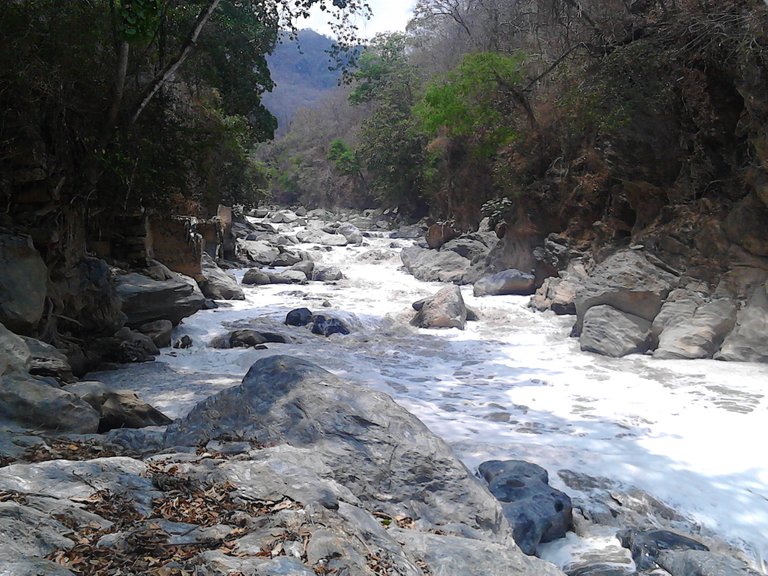
On this route programmed by the Caracas Excursionist Center (CEC), we went to see the Guaire River Canyon and also the El Encantado Hydroelectric Station, the first of its kind installed in Venezuela and the second in Latin America, which came into operation in 1897 to give electrical power to Caracas.
En esta ruta programada por el Centro Excursionista Caracas (CEC), fuimos a conocer el Cañón del río Guaire y también la Estación Hidroeléctrica El Encantado, la primera en su tipo instalada en Venezuela y la segunda de Latinoamérica, que entró en funcionamiento en 1897 para darle energía eléctrica a Caracas.
To go there, we met one Sunday at La California subway station around 7:30 in the morning and from there we went by bus to El Encantado urbanization, located in El Hatillo municipality. It is a high area and the walk began towards the viewpoints of El Encantado, where we could observe panoramic views of the surrounding towns.
Para ir hasta allá nos encontramos un domingo en la estación del metro La California como a las 7:30 de la mañana y de ahí nos fuimos en autobús hasta la urbanización El Encantado, ubicada en el municipio El Hatillo. Es una zona alta y la caminata comenzó hacia los miradores de El Encantado, donde pudimos observar unas vistas panorámicas de las poblaciones circundantes.
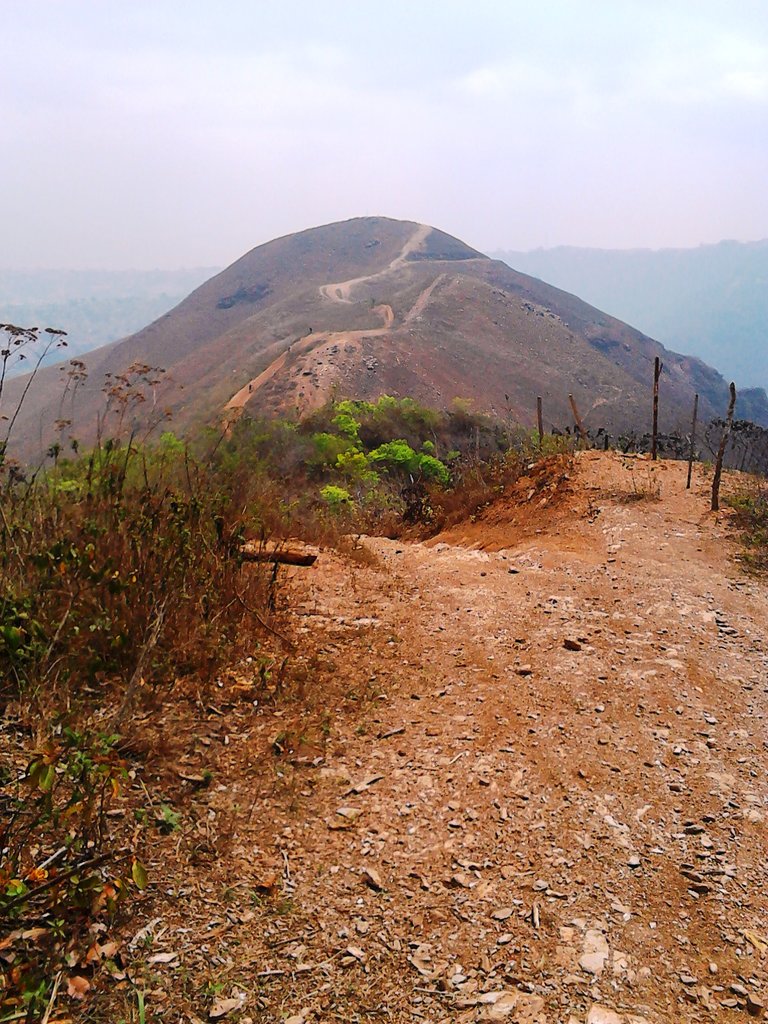
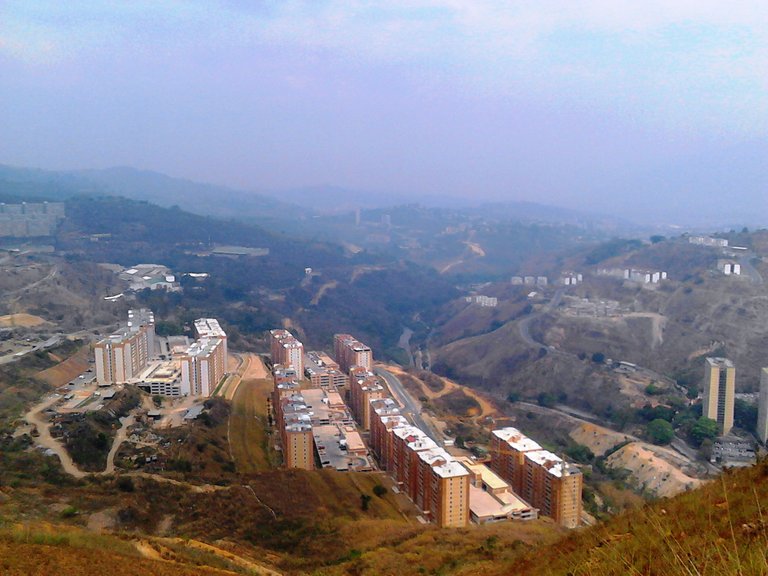


Then we begin to go down first along a paved road and then through dirt, rocks and broken cement, until we reach Los Naranjos de La Lagunita sector, to visit the old hydroelectric plant.
Luego comenzamos a bajar primero por un camino pavimentado y luego de tierra, rocas y cemento roto, hasta llegar al sector Los Naranjos de La Lagunita, para visitar la antigua planta hidroeléctrica.

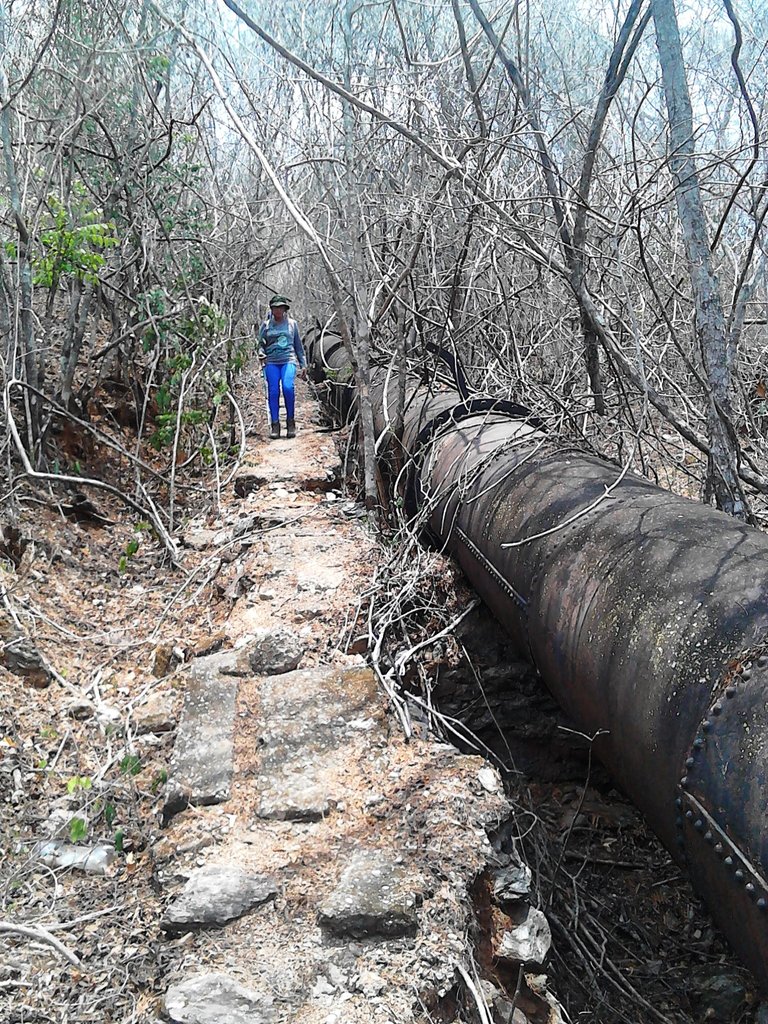
This descent is quite steep, a companion of the group slipped, so we walked carefully so as not to fall on top of some sharp rock.
Esta bajada es bastante abrupta, una compañera del grupo se resbaló, por lo que caminamos con cuidado para no caer encima de alguna afilada roca.
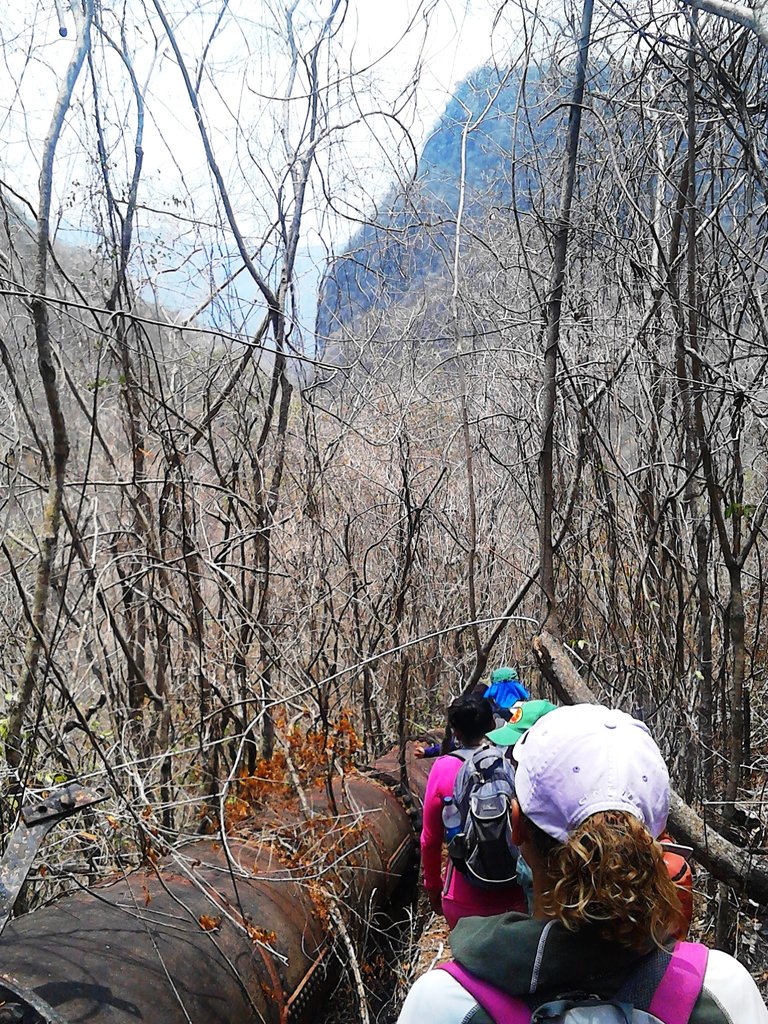
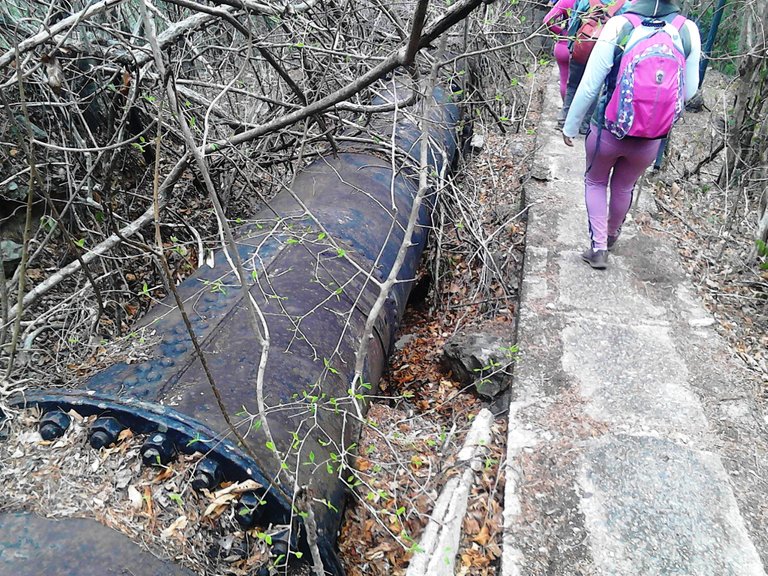
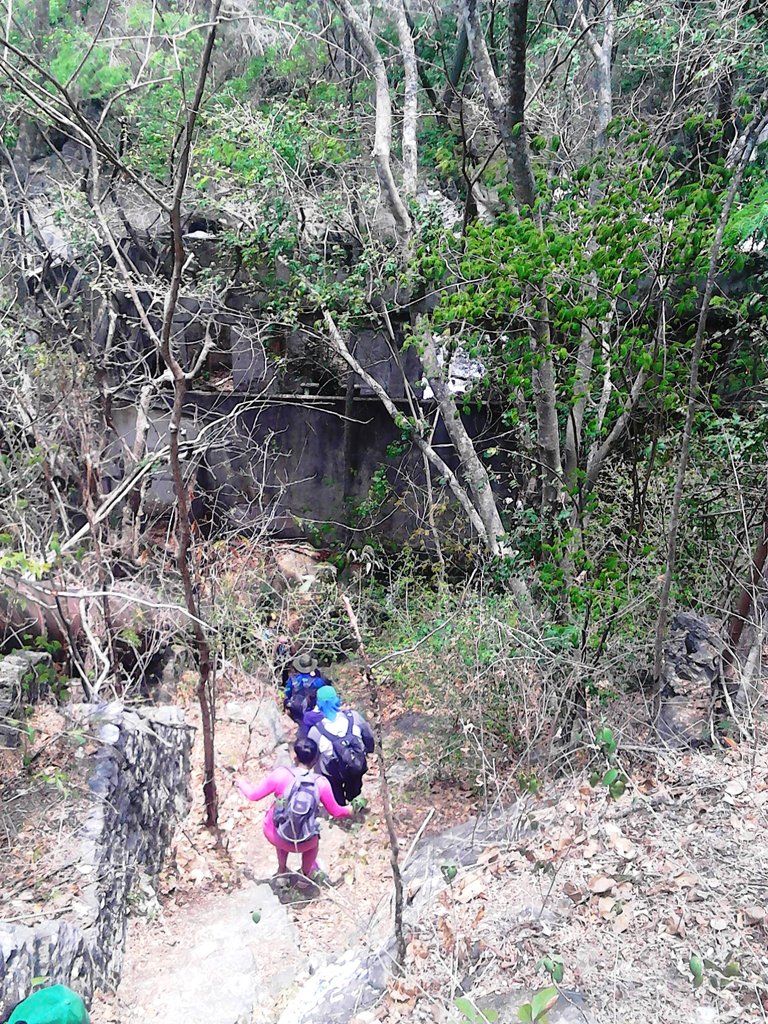
Then we arrive at the site where the abandoned hydroelectric plant is located, which operated until 1911, with its turbines between old walls without a roof, windows without frames, dry leaves, huge trees and on one side the Guaire River running in a rush.
Luego llegamos al sitio donde se encuentra la planta hidroeléctrica abandonada, la cual funcionó hasta 1911, con sus turbinas entre paredes viejas sin techo, ventanas sin marcos, hojas secas, enormes árboles y a un lado el río Guaire corriendo caudaloso.
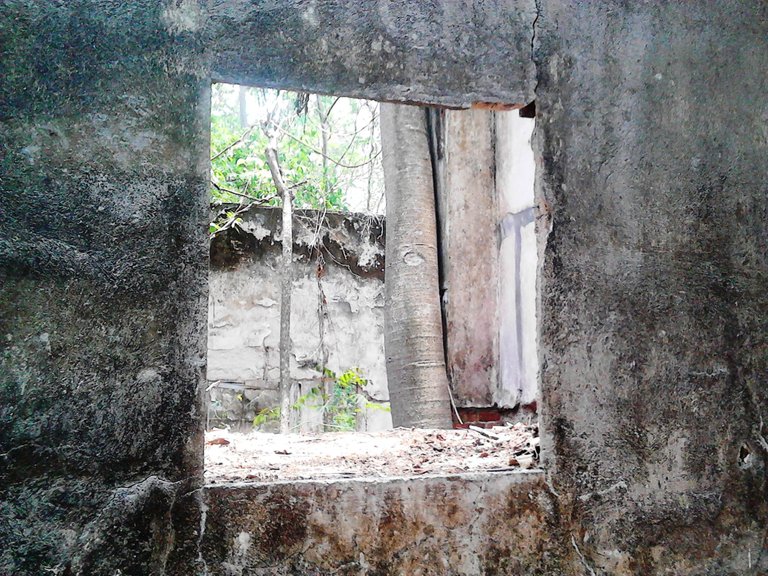
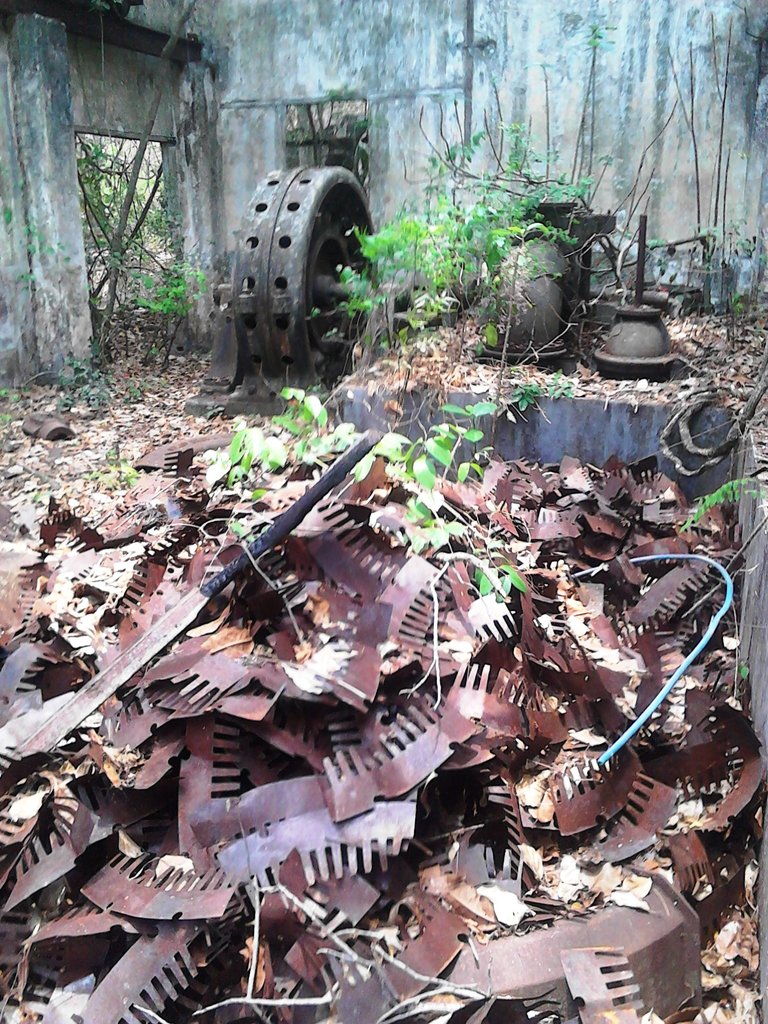
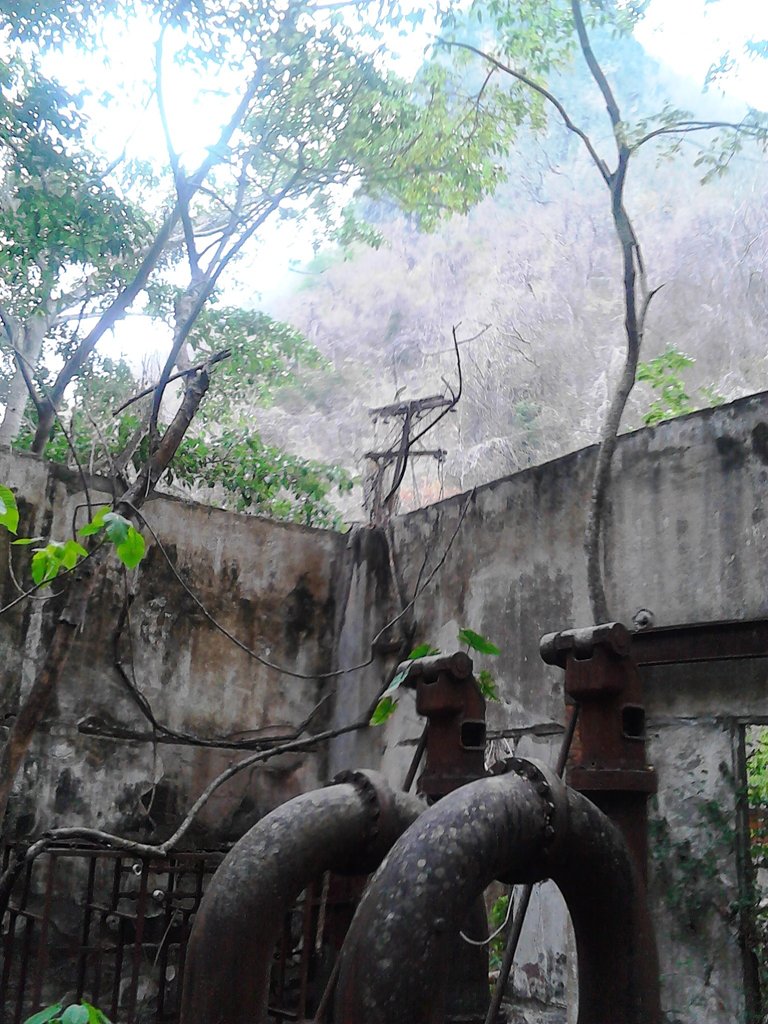
The speed of the waters through this sloping area was used by the engineer Ricardo Zuloaga, founder of the Anonymous Electricity Company of Caracas, who built the El Encantado Station in the Guaire River Canyon and placed Caracas among the few cities in the world with electricity produced by running water in the late 19th century. Its installed capacity was 240 kilowatts.
La velocidad de las aguas por esta zona con pendiente fue aprovechada por el ingeniero Ricardo Zuloaga, fundador de la Compañía Anónima Electricidad de Caracas, quien construyó en el Cañón del río Guaire la Estación El Encantado y puso a Caracas entre las pocas ciudades del mundo con electricidad producida con corriente de agua a finales del siglo XIX. Su capacidad instalada era de 240 Kilovatios.
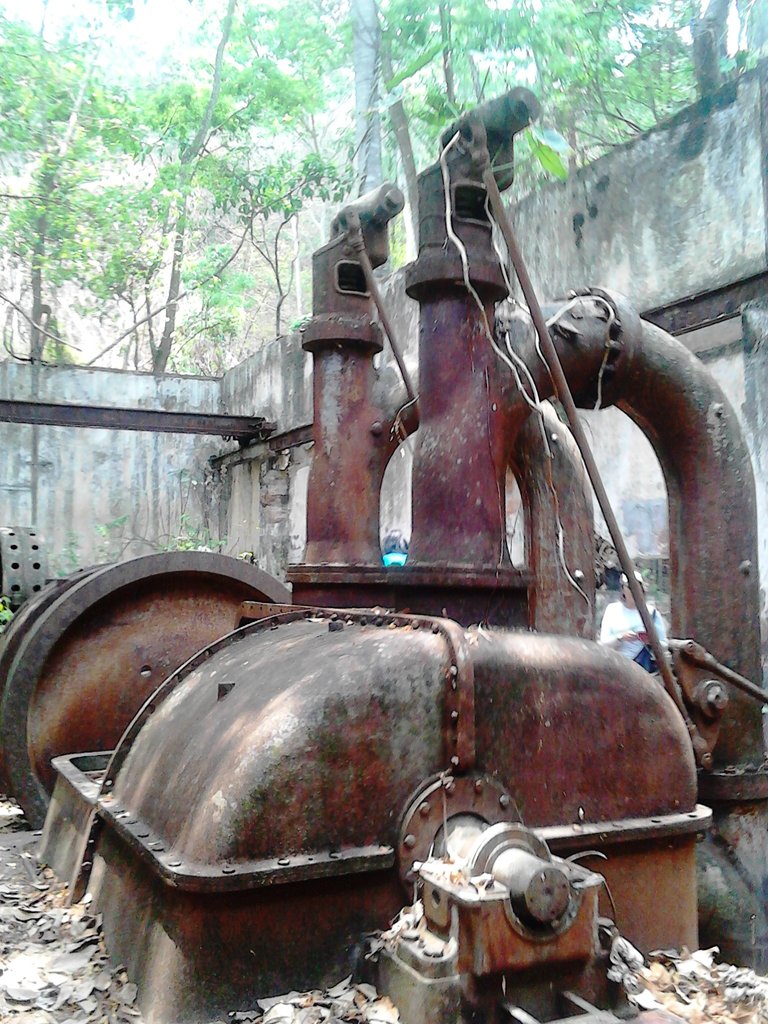
A few years later, at the beginning of the 20th century, the capital's population had grown and the electrical capacity had to be increased, for which reason two more stations were built: Los Naranjos, in El Hatillo and La Lira, on the Guaire River.
Pocos años después, a inicios del siglo XX, la población capitalina había crecido y había que aumentar la capacidad eléctrica, por lo que fueron construidas dos estaciones más: Los Naranjos, en El Hatillo y La Lira, sobre el río Guaire.
We had a good time exploring the surroundings of the hydroelectric plant, almost totally absorbed by the vegetation.
Pasamos un buen rato explorando los alrededores de la planta hidroeléctrica, casi totalmente absorbida por la vegetación.
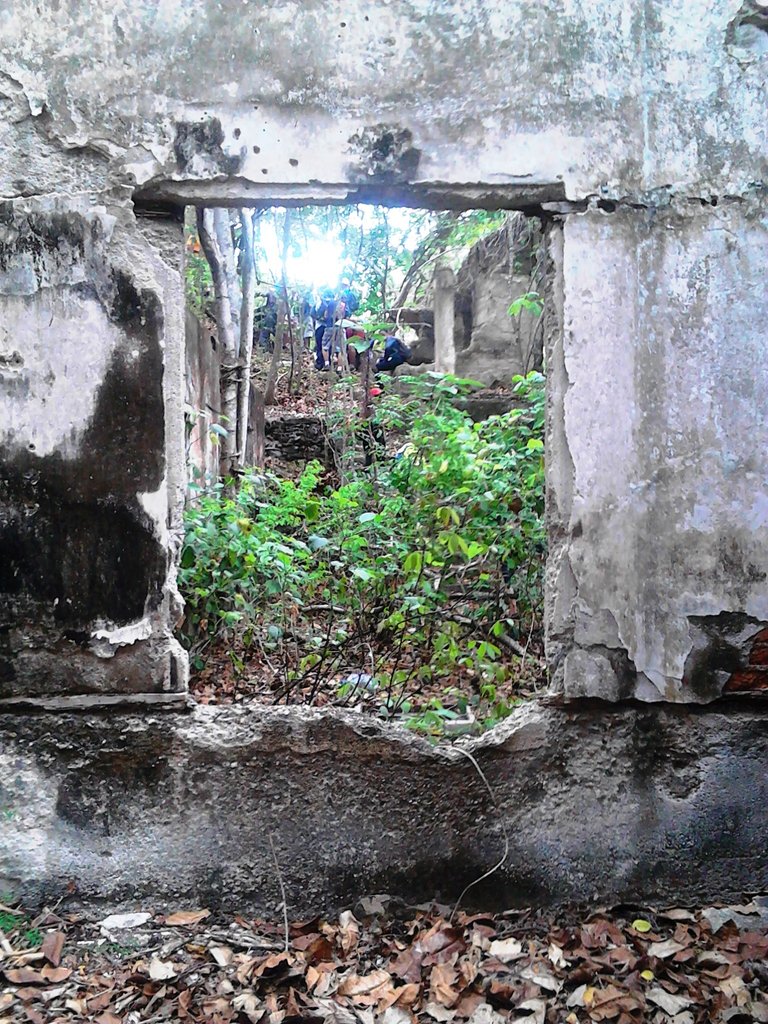
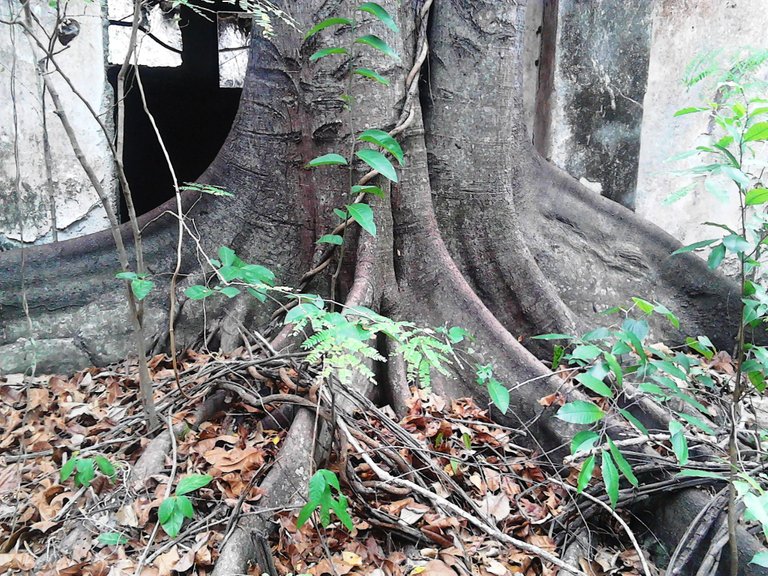
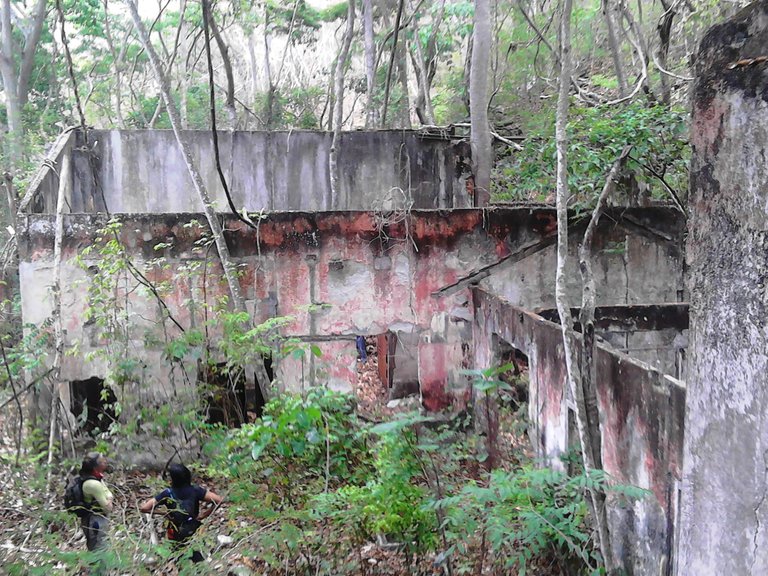
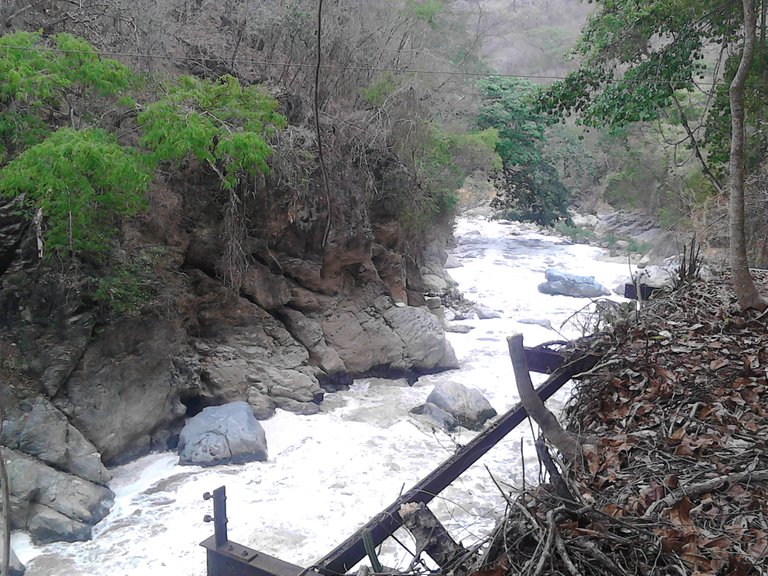
We continue our route descending near the river, the landscape here is very attractive and it seems incredible that these waters are so polluted by the life of the city, although the smell was not very strong, in several parts we saw bottles and all kinds of garbage among the stones or circulating with the water.
Seguimos nuestra ruta descendiendo cerca del río, el paisaje aquí es muy atractivo y parece increíble que estas aguas estén tan contaminadas por la vida de la ciudad, aunque el olor no era muy fuerte, en varias partes vimos botellas y todo tipo de basura entre las piedras o circulando con el agua.

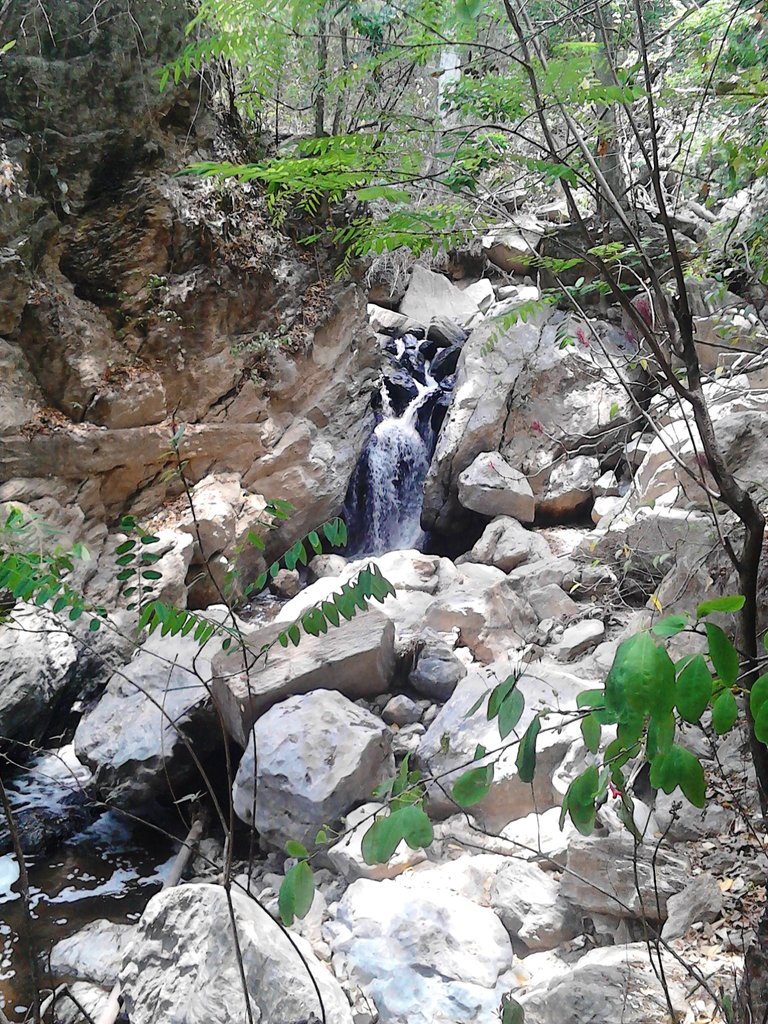
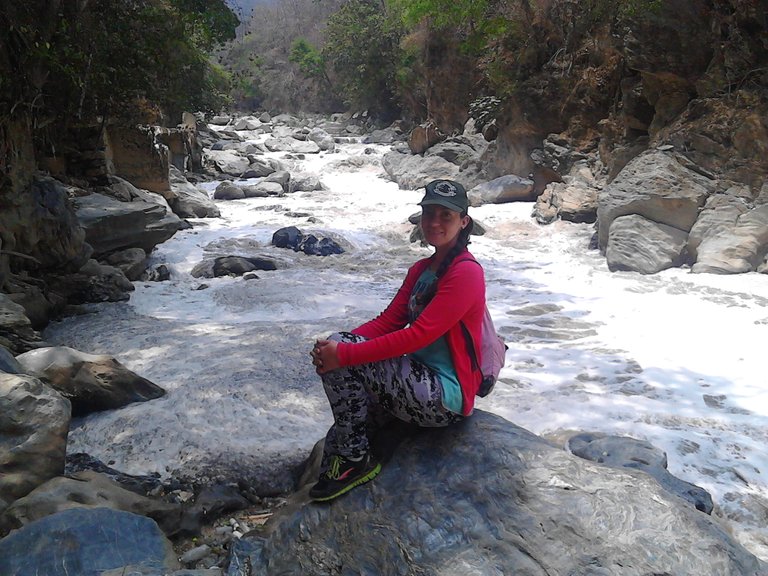
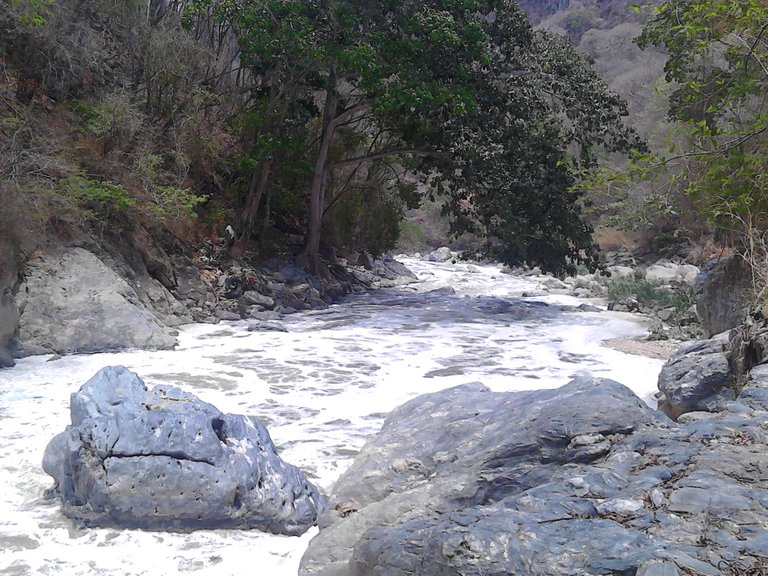
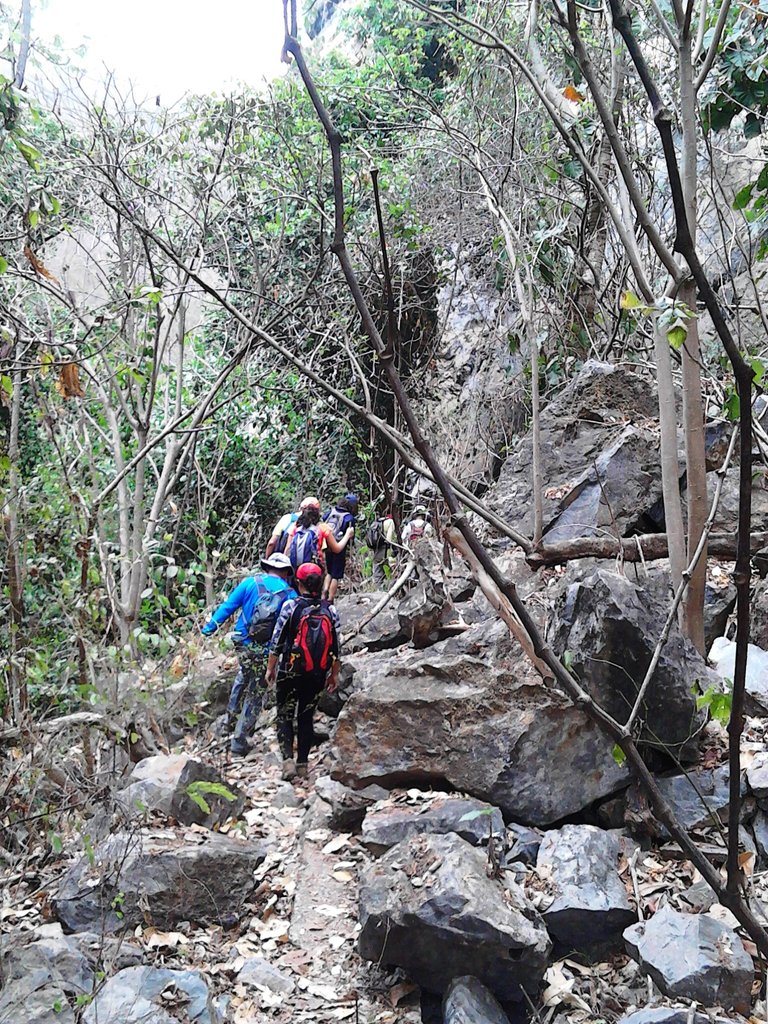
Further on we arrive at the geological formation of Peñón de las Guacas, this site is incredible, on one side you see the rocky gorge of the Guaire River Canyon and on the other you are walking along a concrete walkway under a huge gray rock.
Más adelante llegamos a la formación geológica del Peñón de las Guacas, este sitio sí que es increíble, por un lado ves la garganta rocosa del Cañón del río Guaire y por otro vas caminando por una pasarela de concreto debajo de una enorme roca gris.
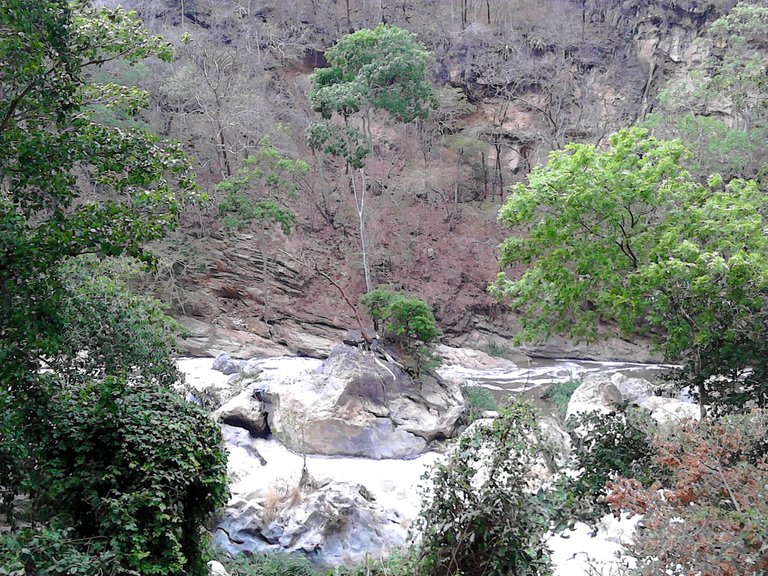


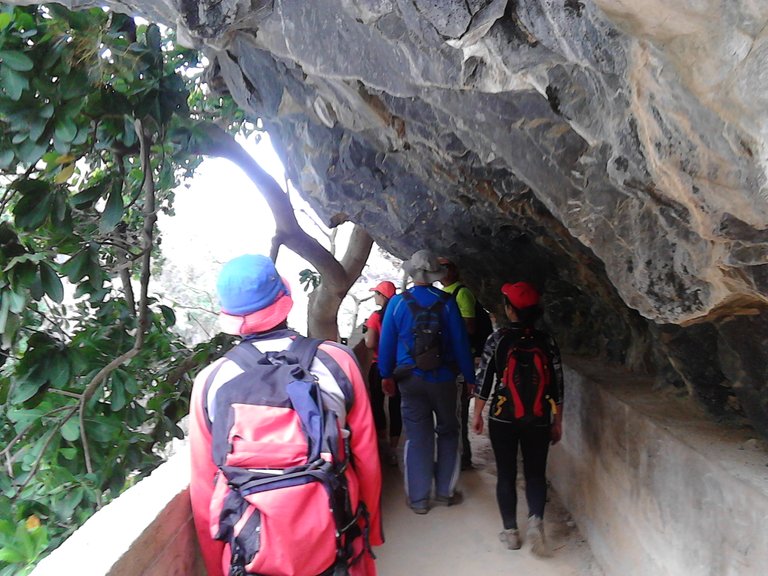
As we advance, the rocky landscape becomes more and more abrupt, with those pronounced rocks.
A medida que avanzamos, el paisaje rocoso se torna cada vez más abrupto, con esas pronunciadas piedrotas.
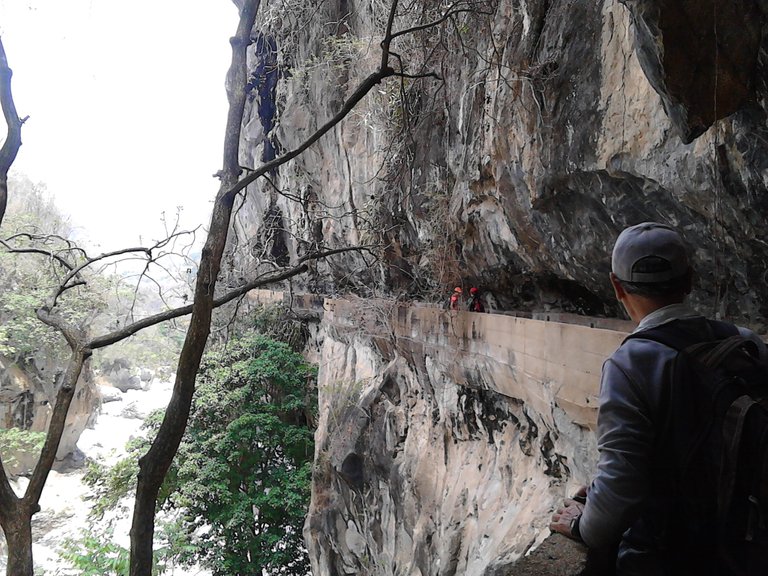
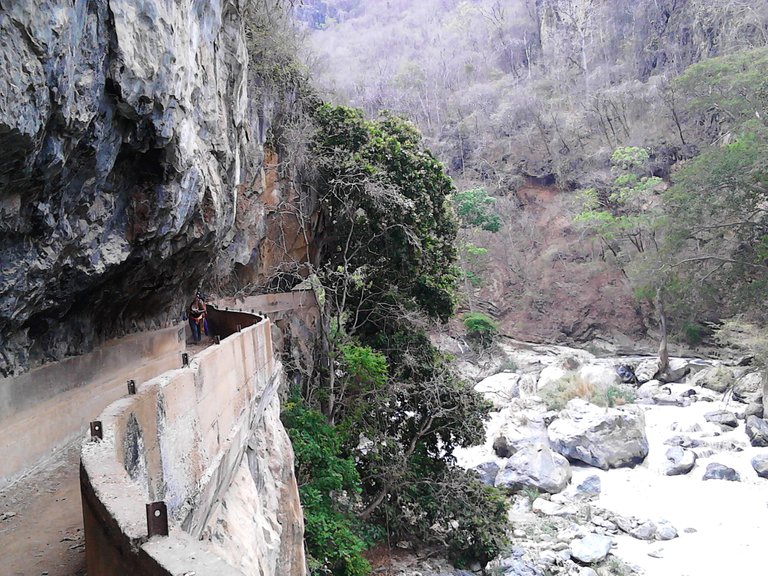
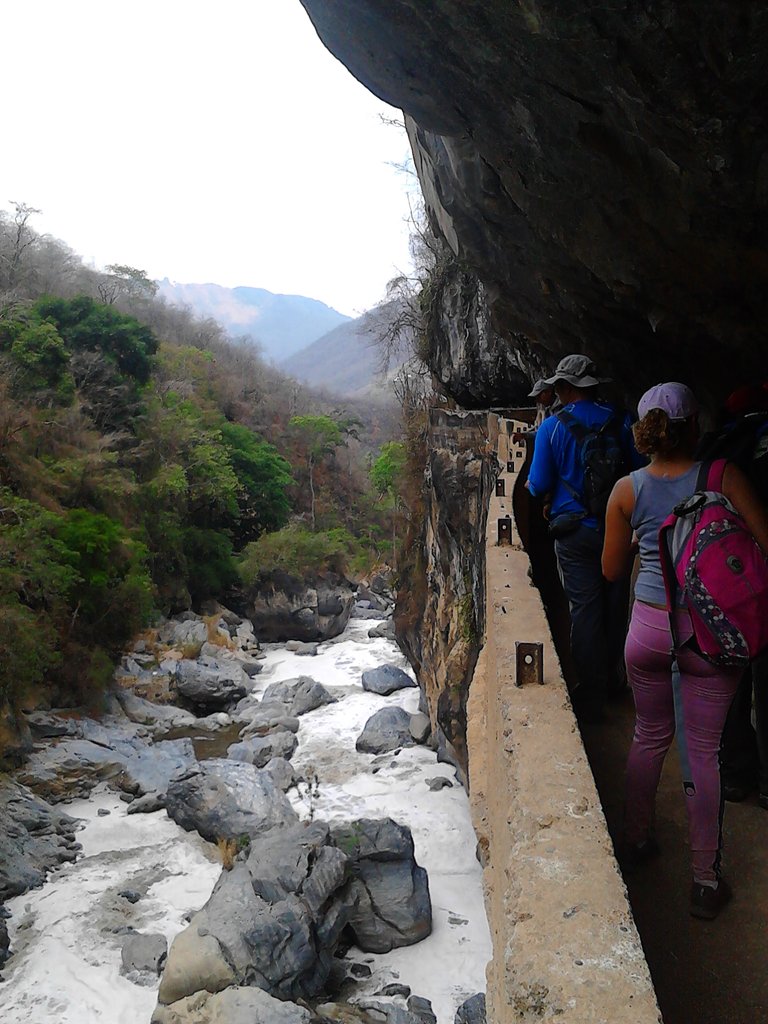
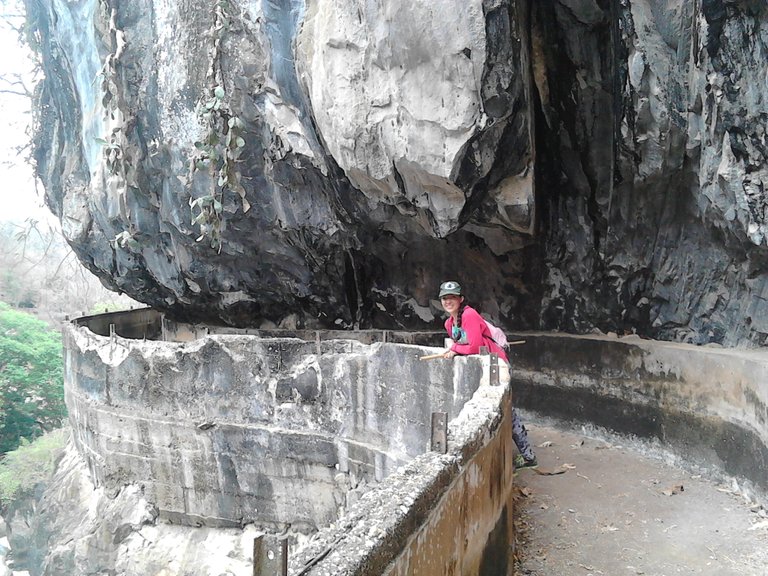
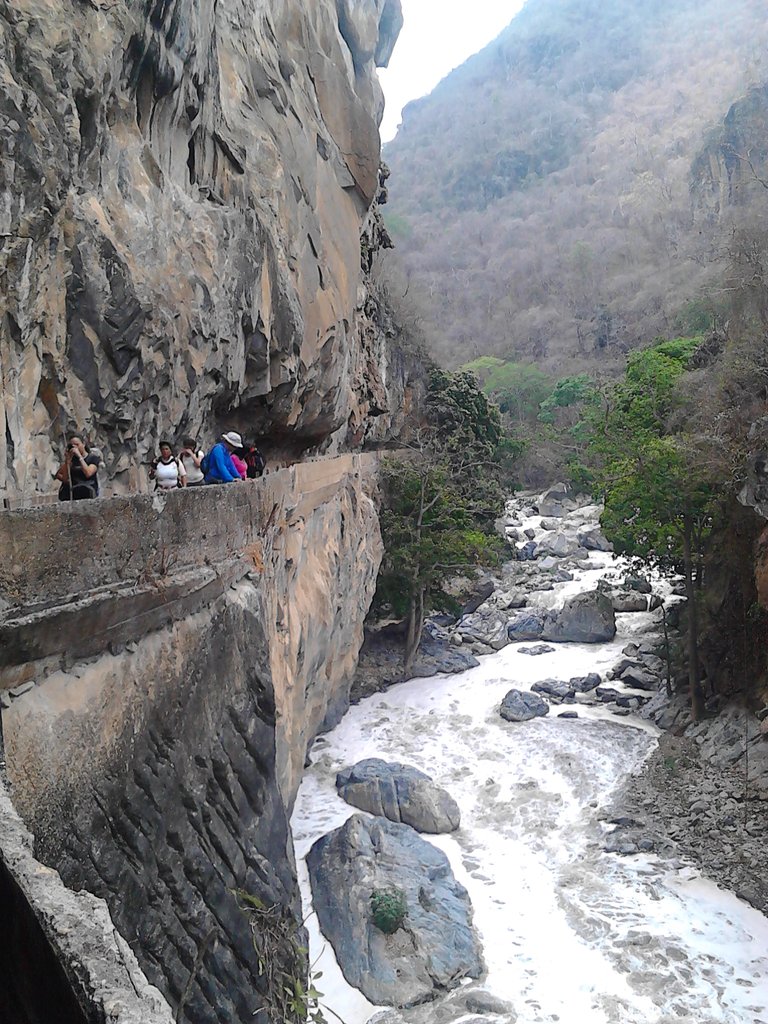
Then comes a descent through some ancient channels, through there you reach the Ricardo Zuloaga Cave, the largest cave in the capital region of Venezuela, it measures 0.5 km and has a large population of bats. At first we were going to go there, but it got late and we didn't go, so we stayed around resting and eating what we had.
Después viene una bajada por unos antiguos canales, por allí se llega a la Cueva Ricardo Zuloaga, la mayor caverna de la región capital de Venezuela, mide 0,5 Km y tiene una gran población de murciélagos. En un principio íbamos a ir para allá, pero se nos hizo tarde y no fuimos, así que nos quedamos por ahí descansando y comiendo lo que llevamos.
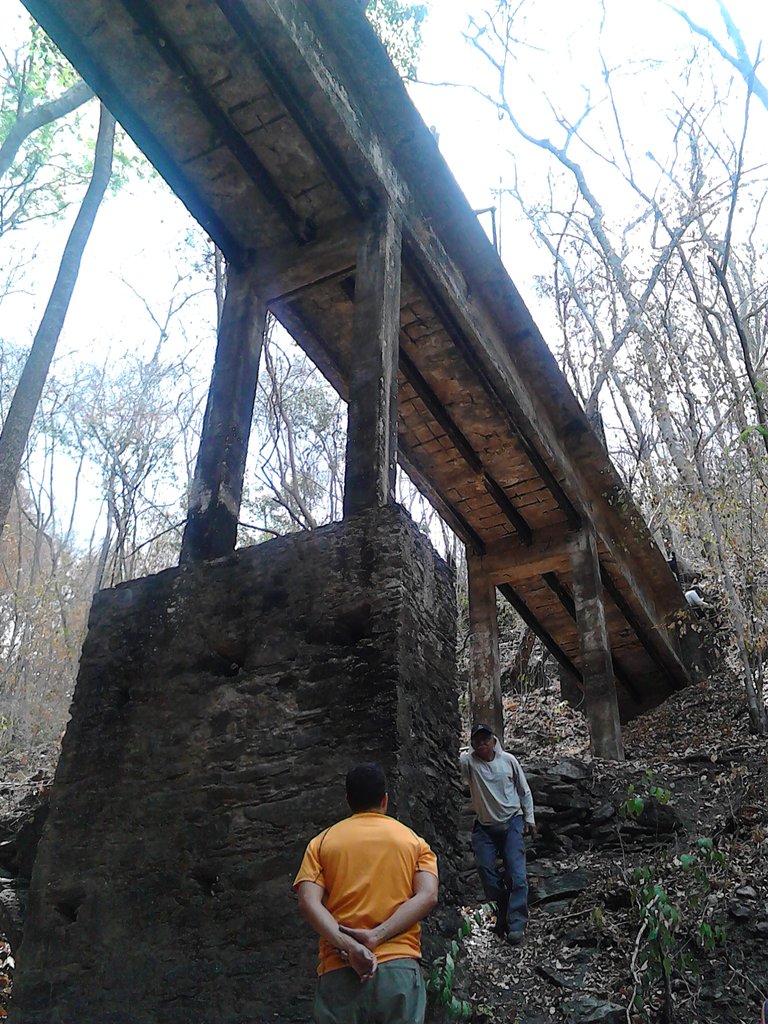

We returned the same way, we got more tired because almost everything was uphill, but the effort was worth it because we got to know a very different place from the usual ones in excursions, since it combines nature and an important part of the history of the development and growth of Caracas.
Regresamos por el mismo camino, nos cansamos más porque casi todo fue en subida, pero el esfuerzo valió porque conocimos un sitio muy diferente a los acostumbrados en excursiones, ya que combina naturaleza y una parte importante de la historia del desarrollo y crecimiento de Caracas.
All photos were taken by me with my Orinoquia cellphone / Todas las fotos fueron tomadas por mí con mi celular Orinoquia
Congratulations, your post has been added to Pinmapple! 🎉🥳🍍
Did you know you have your own profile map?
And every post has their own map too!
Want to have your post on the map too?
@tipu curate
Upvoted 👌 (Mana: 28/112) Liquid rewards.
Thank you! :)
Thank you for sharing this amazing post on HIVE!
Your content got selected by our fellow curator @priyanarc & you just received a little thank you via an upvote from our non-profit curation initiative!
You will be featured in one of our recurring curation compilations and on our pinterest boards! Both are aiming to offer you a stage to widen your audience within and outside of the DIY scene of hive.
Join the official DIYHub community on HIVE and show us more of your amazing work and feel free to connect with us and other DIYers via our discord server: https://discord.gg/mY5uCfQ !
If you want to support our goal to motivate other DIY/art/music/homesteading/... creators just delegate to us and earn 100% of your curation rewards!
Stay creative & hive on!
Wow! Thank you very much for the support! :)
Hiya, @LivingUKTaiwan here, just swinging by to let you know that this post made it into our Honorable Mentions in Daily Travel Digest #1052.
Your post has been manually curated by the @pinmapple team. If you like what we're doing, please drop by to check out all the rest of today's great posts and consider supporting other authors like yourself and us so we can keep the project going!
Become part of our travel community:
Thank you very much! :)